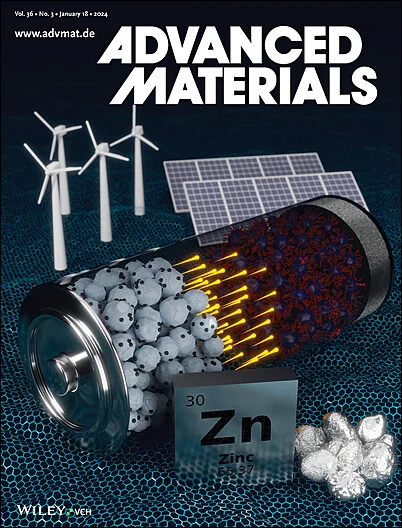仿生3D打印自适应水凝胶生物粘合剂,具有卓越的抗感染能力,具有挑战性的组织粘连,止血和医疗保健
IF 26.8
1区 材料科学
Q1 CHEMISTRY, MULTIDISCIPLINARY
引用次数: 0
摘要
传统的缝合和吻合器会给患者带来额外的创伤、疼痛和费用。作为替代品,现有的生物粘合剂存在制造不精确、湿组织粘附有限以及有效伤口管理的生物功能不足的问题。本研究提出了由改性天然单宁酸(TA)、超支化聚lysine (HPL)和丙烯酸(AA)组成的仿生水凝胶生物胶粘剂(简称PTLAs),为具有挑战性的环境(水下、体液、寒冷、压力)下的组织粘连提供解决方案,并用于增强医疗保健。这些ppla是通过3D打印制造的,能够以个性化的方式定制和控制生物粘合剂的生产,具有很高的可重复性。受软体动物的启发,开发的PTLAs具有强大的湿和水下组织粘附性,优于商业和许多最近报道的生物粘合剂。离体羔羊和大鼠模型显示出超快(5 s)和有效的密封和止血。优异的抗冻性和耐压性进一步扩大了其在极端环境中的适用性。同时,加上优越的抗感染能力,PTLAs确保加强伤口保健,同时密封和止血。此外,它们的自胶特性支持干粉粘附/密封应用,实用包装和长期储存。总体而言,自适应组织样ppla在生物胶带、生物绷带、生物密封剂、生物载体等方面具有变革潜力,为下一代生物粘合剂的设计和增强的医疗保健解决方案铺平了道路。本文章由计算机程序翻译,如有差异,请以英文原文为准。
Biomimetic 3D‐Printed Adaptive Hydrogel Bioadhesives Featuring Superior Infection Resistance for Challenging Tissue Adhesion, Hemostasis, and Healthcare
Conventional suturing and stapling cause additional trauma, pain, and cost for patients. As alternatives, existing bioadhesives suffer from imprecise fabrication, limited wet tissue adhesion, and insufficient biological functionalities for effective wound management. This work proposes biomimetic hydrogel bioadhesives composed of modified natural tannic acid (TA), hyperbranched polylysine (HPL), and acrylic acid (AA), abbreviated PTLAs, to offer solutions for tissue adhesion under challenging environments (underwater, body fluids, cold, pressure), and for enhanced healthcare. These PTLAs are fabricated via 3D printing, enabling the precise and controlled production of bioadhesives that are customized in a personalized manner with great reproducibility. Inspired by molluscs, developed PTLAs exhibit robust wet and underwater tissue adhesion, outperforming commercial and many recently reported bioadhesives. Ex vivo lamb and in vivo rat models demonstrate ultrafast (5 s) and efficient sealing and hemostasis. Exceptional freeze resistance and pressure resistance further expand their applicability to extreme environments. Meanwhile, coupled with superior infection resistance, PTLAs ensure enhanced wound healthcare while sealing and hemostasis. Further, their self‐gelling feature supports dry powder adhesion/sealing applications, practical packaging, and long‐term storage. Overall, adaptive tissue‐like PTLAs present transformative potential as bio‐tapes, bio‐bandages, bio‐sealants, bio‐carriers, etc., paving the way for next‐generation bioadhesives design and enhanced healthcare solutions.
求助全文
通过发布文献求助,成功后即可免费获取论文全文。
去求助
来源期刊

Advanced Materials
工程技术-材料科学:综合
CiteScore
43.00
自引率
4.10%
发文量
2182
审稿时长
2 months
期刊介绍:
Advanced Materials, one of the world's most prestigious journals and the foundation of the Advanced portfolio, is the home of choice for best-in-class materials science for more than 30 years. Following this fast-growing and interdisciplinary field, we are considering and publishing the most important discoveries on any and all materials from materials scientists, chemists, physicists, engineers as well as health and life scientists and bringing you the latest results and trends in modern materials-related research every week.
 求助内容:
求助内容: 应助结果提醒方式:
应助结果提醒方式:


